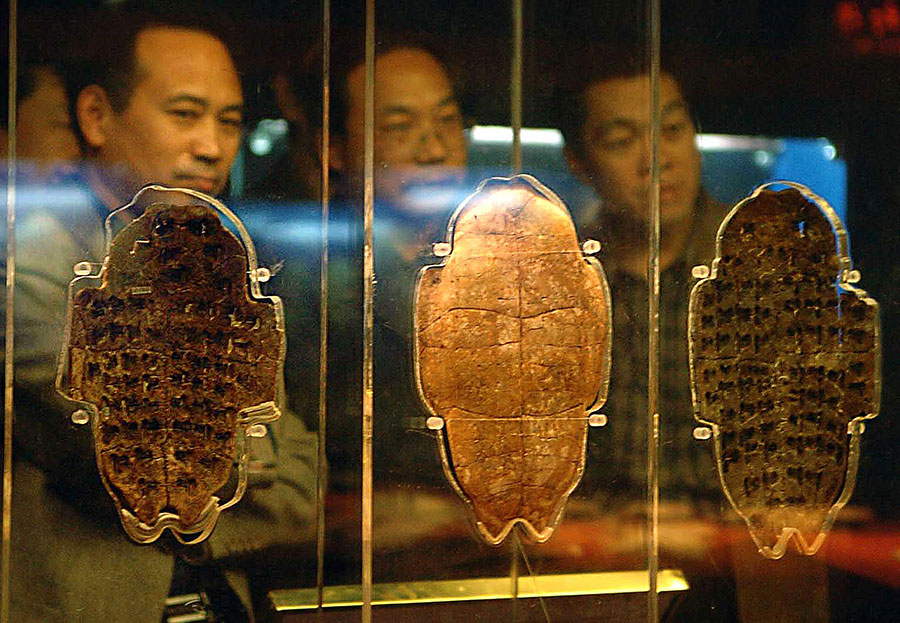 |
|
Oracle bones on display. [Photo provided to China Daily] |
However, they are also facing the problem of how to attract more specialists.
"Studying oracle bone inscriptions has almost become a dying art," he says.
Song recalls he often worked with 20 other scholars during projects in the 1980s. In a recent research project in Shandong, he only had three academics join him.
"Scholars switched to other fields," Zhao says. "It's easier to make a major breakthrough by studying bamboo slips or books made of silk."
Introduced centuries after oracle bones, bamboo slips and silk books were major forms of recorded media in ancient China.
And, there are also some key overseas institutions that have collections of oracle bones, including the British Library and the State Hermitage Museum in Russia. Many bones were taken abroad by Western missionaries.
Song recently finished cataloging oracle bones at the State Hermitage Museum, and one of his students also had a project in London studying a collection amassed by noted British Sinologist Lionel Charles Hopkins (1854-1952).
According to Song, academic writings on oracle bone inscriptions have been discovered in 14 different languages around the world, and the academic magazine run by his institution, keeps receiving papers with new angles from abroad.
"The statistics are insufficient though," Song tells China Daily. "When I did research at some of these institutions, I counted the pieces one by one, and found the numbers were more than their inventory showed, probably due to historical errors."
And, as he points out, there may be "thousands more" oracle bones in the hands of individuals in and around Anyang, Henan province, following discoveries there a century ago.
In the late 19th century, many oracle bones were unearthed by local villagers at the Yinxu Ruins in Anyang, an ancient capital during the Shang Dynasty. However, the locals regarded them as fossils and used them as ingredients in traditional Chinese medicine. There is a term used to describe this event as "humans swallowing Shang history".
Nevertheless, Wang Yirong, a Beijing scholar and antiquarian, stumbled on some animal bones and tortoise shells on sale at a pharmacy in 1899, and he noticed symbols that looked like writing. He was later hailed as the discoverer of oracle bone inscriptions.
People later swarmed to Anyang to dig for bones, and many fell into the hands of private collectors and antique dealers. In 1928, the government launched an official archaeological excavation at Yinxu and protected the area to prevent more artifacts from disappearing.
According to Zhao, most oracle bones housed in the National Library of China originated from these early 20th century private collections, which were either donated or purchased by public institutions.